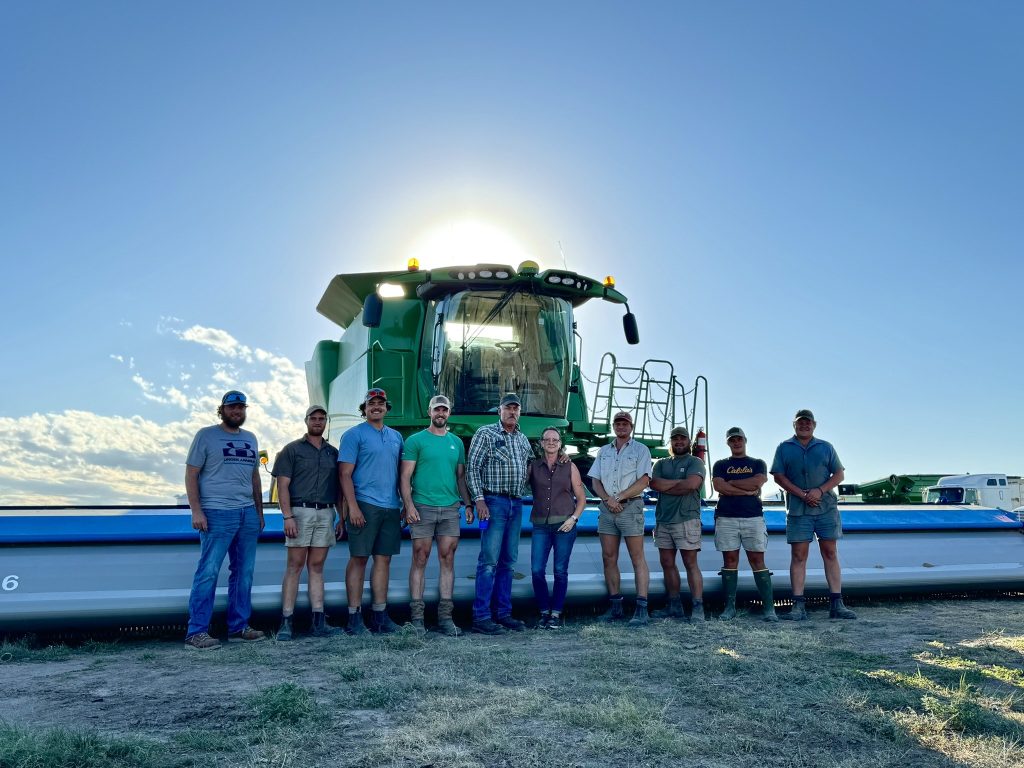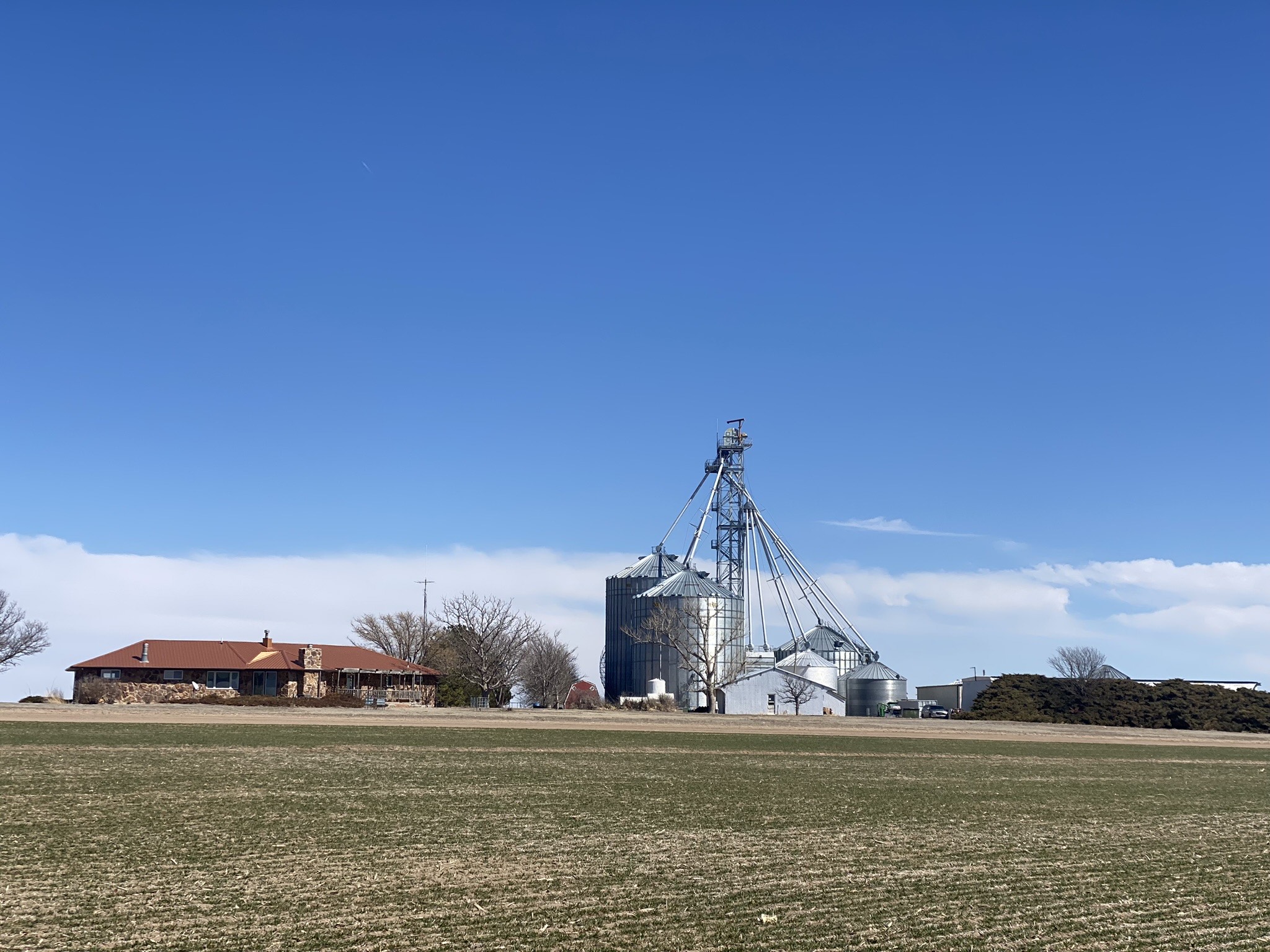According to the U.S. Citizenship and Immigration Service, there are about 368,000 people employed legally as temporary agricultural workers on U.S. farms under the H2A program.
While they are heavily concentrated in California’s Central Valley and Florida’s citrus groves, they can be found all across the United States, wherever there is farm work to be done. Without them, American agriculture would grind to a halt.
For one farm family, the Purvises of western Kansas, the H2A workers are a lifeline that keeps their farm on the High Plains going. Eric and Heather Purvis raise cattle and grow corn, wheat, soybeans and pinto beans on their property, E&H Farm. It’s located in Wallace County, near state highway 40. (A photo above courtesy of Heather Purvis shows the farm base.) Wallace County has only about 1,800 residents in total; the little town of Weskan has about 15 square blocks. The nearest big town is Colorado Springs to the west. Going shopping requires a two-and-a-half-hour drive.
According to the National Weather Service, drought is gone from most of the country, but it still lingers in parts of west Kansas.
“Everything depends on the weather,” Heather Purvis said.

The Purvises employ eight H2A workers, all South Africans with farm experience. Heather reckons there may be 25 South African farmworkers within a 100-mile radius of their farm. They are usually young men.
“They speak English, work hard, and they know farm work,” she said. Farmers in South Africa face difficult conditions as the government began seizing farms owned by white families in 2018.
Heather figures they have cycled 20 or 30 workers through their farm since using the program. Becoming an H2A employer is quite a commitment. Employers must pay the workers’ travel costs to and from the farm, provide clothing and equipment and submit to regular inspections by the Department of Labor to ensure workers are being treated fairly and housed and fed properly.
The Purvises own a second, furnished house where their workers stay. “The only way you can do it realistically is if you own another property,” Heather said.
H2A employers must either provide housing or pay for it. The housing facilities are inspected at least once a year.
The employer must either provide meals every day or provide transportation to buy groceries. “During harvest we provide the evening meal,” she said. “When they’re working 12-hour days at harvest, they don’t have time to cook for themselves.”
Adjusting to the U.S. central Plains and its climate can be tough for some new arrivals. “We’ve had some arrive without any warm clothes because they didn’t need any in their own countries,” Heather said. “We save boxes of clothes from previous workers.”
First-time H2A workers are supposed to have initial interviews in the consulates of their own countries to make sure there are no red flags in their background. Under the H2A (and H2B) temporary visa programs, workers can stay up to nine months at a time, but then must return to their own countries for three months out of the year.
Workers under the H2A program are not supposed to show “immigrant intent” or intent to remain in the U.S. permanently. If they do wish to emigrate to the U.S., employers can sponsor their application for green cards, which allow permanent U.S. residency. The process of getting a green card can take a year or two and requires a finding that no U.S. workers are available to do the work they are doing.
It’s to an employers’ advantage to inspire loyalty and have the same workers return. The Purvises have formed close bonds with some workers. When some were seriously injured in an auto accident, the Purvises drove them to a hospital in Colorado Springs.
The Purvises work with a Chicago law firm that specializes in handling H2A paperwork. They have considered workers from Australia, Ukraine and Chile. “We had one guy from Chile that we really liked,” Heather said. The H2A process can be taken advantage of by workers. One Ukrainian worker offered to pay full airfare for his trip to the U.S., then disappeared as soon as his plane landed in New York.
Separate categories of workers—like skilled crop sprayers—require separate visas than farmhands. The Purvises appreciate the need for all the safeguards that protect legal workers, but sometimes wonder whether too many bureaucratic hoops are being raised for employers to jump through.
Every time the Purvises apply for a guest worker visa, they must advertise the position in local or regional publications—to ensure they are not taking jobs away from any Americans. “I haven’t had one single application in eight years,” Heather said. “We can’t find Americans who want to do this work.”
David Murray can be reached at [email protected].




